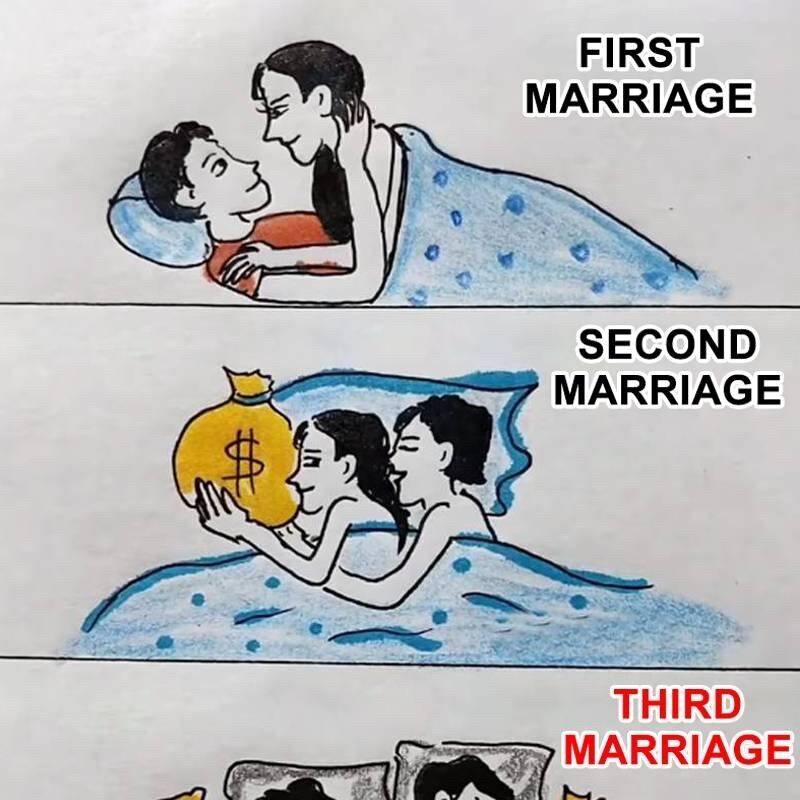Marriage has always been described as one of life’s greatest adventures. It carries both mystery and familiarity, rooted in tradition yet shaped uniquely by each couple who enters it.
People often hear about marriage in fairy tales, movies, or from older generations, but its true nature can only be understood through lived experience.
What surprises many is how much marriage can change depending on when in life it happens. A marriage at 22 feels different from one at 42.
First marriages rarely resemble second ones, and second marriages rarely resemble third. Each stage brings its own tone, its own lessons, and its own rhythm.
A first marriage is often born out of dreams and unshakable idealism. It is the leap of two young souls convinced that love is enough.
Couples walk into it with visions of shared homes, exciting adventures, children, and endless romance. The honeymoon feeling colors everything.
What they often don’t anticipate are the hidden struggles that surface as real life unfolds.
Finances, career instability, sleepless nights with babies, or even the personal growth of each partner can shift the ground beneath them.
Because many are still learning who they are, first marriages sometimes crack under the weight of growth that happens in different directions.
Without strong communication skills or emotional maturity, even small disagreements can grow into walls that separate two people who once promised forever.
Yet, there is something uniquely sweet about first marriages. They hold the innocence of complete surrender and first-time devotion.
They carry the beautiful belief that love alone is strong enough to conquer every obstacle, even if reality later proves otherwise.
Even when these marriages end, they rarely leave empty-handed.
What remains are lessons — lessons about patience, forgiveness, compromise, and the truth that love requires work beyond the butterflies.
Moving into second marriages, the picture changes. Here, love is often approached with wisdom born from pain.
Divorce, heartbreak, or even widowhood reshapes a person. They no longer step into marriage blind to reality.
Instead, they enter with sharper awareness of who they are, what they need, and what they are capable of giving.
Caution often replaces reckless passion. Instead of being swept away, people search for compatibility, balance, and shared direction.
Many are determined not to repeat the mistakes of the past. They listen more closely, speak more honestly, and choose more carefully.
But second marriages bring complexity. Blended families can be both rewarding and challenging.
Children may resist or feel torn between divided loyalties. Step-siblings may struggle to find their place in a newly merged household.
Financial matters can also complicate things — alimony, assets, debts, and responsibilities from previous lives mix into the new union.
And yet, within those challenges, second marriages often shine with maturity.
Couples learn to accept imperfection. They no longer expect a flawless partner but rather someone willing to walk alongside them.
Many describe second marriages as calmer, steadier, and more grounded.
Even if they lack the fiery “head-over-heels” intensity, they often make up for it with stability, respect, and resilience.
By the time someone enters a third marriage, life itself has already tested them in countless ways.
At this stage, priorities look different. Love becomes less about wild passion and more about companionship and peace.
No longer chained by society’s expectations of what marriage “should” be, people focus instead on what feels right.
They are less concerned with appearances and more concerned with authentic connection.
A third marriage is often free of illusions. People know their boundaries, their desires, and their limits.
They are unlikely to marry from pressure, fear, or obligation. Instead, they choose because of genuine love and understanding.
Priorities have shifted. Where first marriages center on building families and second marriages on blending them, third marriages prioritize tranquility.
The goals are companionship, emotional support, shared values, and the comfort of facing life together.
For some, this companionship means traveling and making memories. For others, it is about walking through health challenges with someone steady at their side.
It may even be about simply enjoying evenings together, free from drama, just grateful for peace.
Surprisingly, third marriages can often be the most successful.
With age comes humility, and with humility comes a deeper kind of love.
Couples in their third marriage often understand that passion may fade, but kindness, patience, and devotion remain.
They are grateful for small joys and more forgiving of flaws, knowing time is too precious to waste on endless battles.
Looking across all these stages, there is one undeniable truth: marriage evolves as people evolve.
First marriages are about discovery — learning who you are and what marriage truly requires.
Second marriages are about redemption — applying lessons learned and rebuilding trust on stronger ground.
Third marriages are about acceptance — embracing companionship, peace, and authenticity over illusions.
Success doesn’t depend on whether it’s the first or the third marriage. It depends on the willingness to communicate and to grow.
It depends on staying open to love, even when love has wounded you before.
Some people find their lifelong partner in their very first marriage, and their story is one of constancy.
Others must stumble, learn, and try again — only to discover a deeper, more enduring love later in life.
The greatest lesson is that love itself is never static. It changes, just as we change.
And the courage to keep opening our hearts — whether for the first time, the second, or the third — is perhaps the greatest adventure of all.
